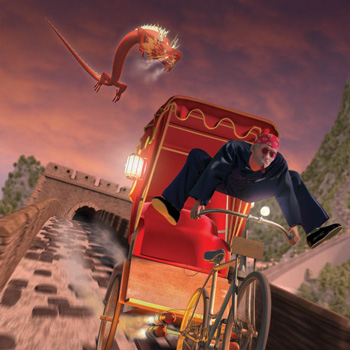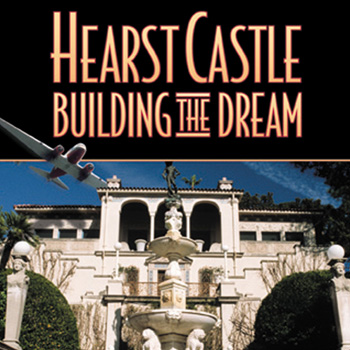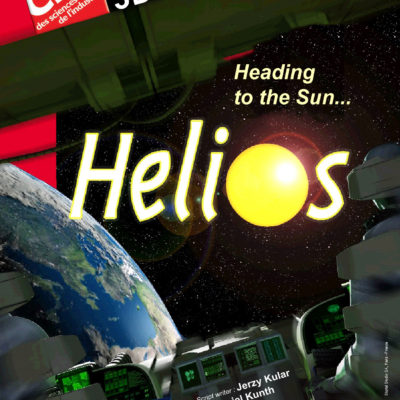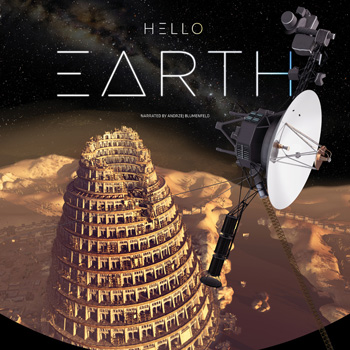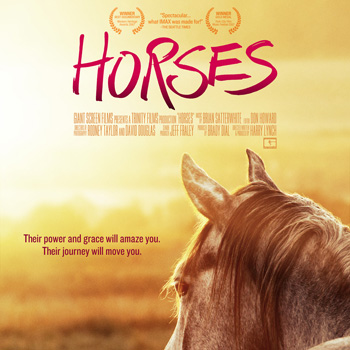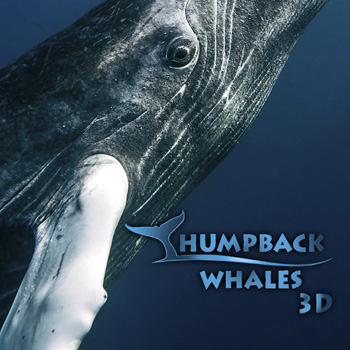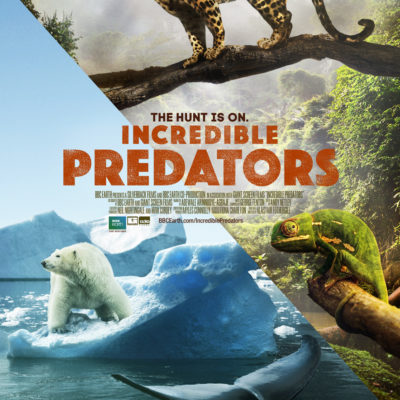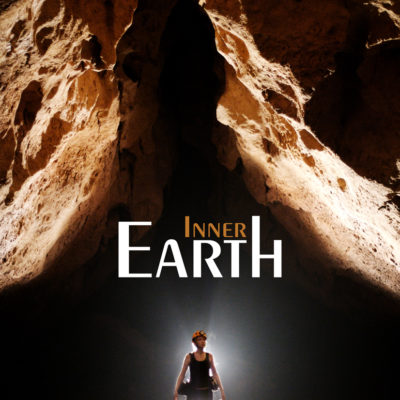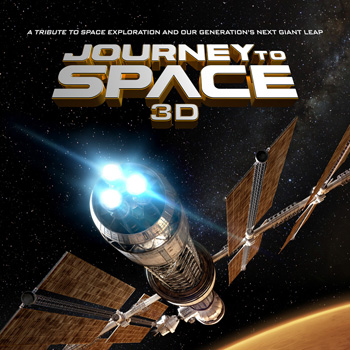

The Great Wall of China: one of the Seven Wonders of the World! Visit this world famous tourist attraction, wonder of architecture, mythical place … Let the fortune teller be your guide and prepare for a magical adventure. This 3D/4D film is aimed at theaters in theme parks, science centers and museums. Given the popularity of its theme, the Great Wall, a world famous historical attraction, the film appeals to a worldwide audience.
Misrepresented, maligned, and on the verge of extinction, the Great White Shark is an iconic predator: the creature we love to fear. Great White Shark will explore the Great White’s place in our imaginations, in our fears, and in the reality of its role at the top of the oceanic food chain.
Living networks connect and support life forms large and small — from colonies of tiny microbes and populations of massive whales to ever-expanding human societies.
In the California Academy of Sciences’ 2015 original planetarium show, Habitat Earth, discover what it means to live in today’s connected world.
Through stunning visualizations of the natural world, dive below the ocean’s surface to explore the dynamic relationships found in kelp forest ecosystems, travel beneath the forest floor to see how Earth’s tallest trees rely on tiny fungi to survive, and journey to new heights to witness the intricate intersection between human and ecological networks.
Narrated by actor Frances McDormand, this 2015 show from the Morrison Planetarium features stunning visualizations of both biological and human-built networks (and of how they intersect), taking show-goers on an incredible, immersive journey through the interconnectedness of life on Earth.
“In Habitat Earth,” says Ryan Wyatt, Director of Morrison Planetarium, “we’re advancing the boundaries of traditional planetarium content, which focuses primarily on astronomy and space.” Instead of looking solely to the stars, the Morrison team is using advanced digital tools and scientific data to tell stories that are uniquely Earth-focused.
The show details the ways humans fit into this ever evolving story of connection. And along the way, audiences will learn more about what we can do to ensure that our cohabitation with the natural world leaves a healthy, sustainable planet for generations to come.
High above the majestic central California coast rises an enchanted castle, a special place created from the dreams of one man, William Randolph Hearst. His vision was inspired by his many trips to Europe’s finest castles. From this unique blend of European influence rose an architectural masterpiece which Hearst furnished with priceless art treasures from around the world. Hearst Castle: Building the Dream will captivate audiences with Europe’s spectacular architectural wonders, the foundation for the dream that became Hearst Castle.
In a swirl of astonishing images, driven by a spaceman and his young co-pilot, we discover with wonder, eclipses, solar prominences, auroras borealis, magnetic fields, and solar eruptions. The Sun was born 5 billion years ago and without the Sun there would be no plant, no animal, and no man! It is situated 150 million kilometers from the Earth and its light comes to us after 8 minutes.
Why do we long for contact with others so much? Does Internet really connect people? How can we tell other potential inhabitants of the Universe that we’re here?
Seeking contact with others remains one of the earliest and strongest humans’ needs. By trying to fulfill this need, we invented writing, radio, telephone, and finally – the Internet. We overcame language barriers, problems related to distance, and information flow time. Thanks to modern technologies and communication devices, we develop our civilisation – we are changing the world and ourselves.
Hello Earth will take you on a journey through landmark moments of the history of communication: you will fly over the mythical Tower of Babel, see the first pictograms – paintings in Lascaux Cave, pay a visit to Johannes Gutenberg, visit a surrealistic library, witness the first ever phone call, see the beginnings of the Internet, and launch of the Voyager. You will immerse into Space and – who knows – maybe you will hear someone seeking contact you with?
Holy Moly is a short animation about moles enjoying 3D entertainment. A mole takes it on himself to create a handcrafted stereoscopic experience for his friends by faking the effect in various movie-like scenarios only to meet his and their doom when an actual boulder squashes them while thinking it’s part of the show.
(AKA Ride Around the World)
The film explores a thriving global culture that has helped shape Western civilization for a thousand years. The film transports viewers to Morocco, Spain, Mexico, Argentina, Patagonia, Texas, and Canada, to ride with exotic horse-and-cattle peoples in an active, educational giant screen experience they’ll never forget.
Space pilgrims in search of the promised land travel through the universe and open the planet which seems to be ideal for life. As they land the planet starts to fulfill their heart’s desires. Nobody but Professor understands the nature of the planet. The aggressiveness of the rest of the team meets the correspondent answer as a feedback from the planet. Two other people, Captain and professor’s assistant managed to survive due to their love. With the help of Professor who stayed as his wishes’ hostage in the planet the loving pair come back to their base spaceship and report that the planet is unsuited for life.
Embark on a journey back in time and across the Solar System, following the paths of asteroids and comets that have collided with Earth—and those that roam far from home. These ancient objects travel billions of years before reaching Earth, and their impact can be so powerful that just one collision can change the course of life on our planet.
Scientists aren’t waiting for asteroids and comets to come to us to learn more about them — get an up-close look at spacecraft sent to rocky asteroids and icy comets to collect invaluable data. You’ll follow the trek of the Chelyabinsk meteor as it entered the Earth’s atmosphere in 2013 and visualize major shifts in the history of the Solar System billions of years in the making—and all in under an hour.
Incredible Predators deconstructs the world of major predators as never before, taking an intimate look at the remarkable strategies they use to success. Unveiling the most dramatic events, Incredible Predators tells the story of the contests between predators and their prey, showcasing how these supreme species have to be at the very peak of performance to have any chance of success. Advanced filming techniques expose the planet’s top predators in extraordinary footage. Using new high-resolution thermal cameras, Incredible Predators reveals the stealth of the leopard. For the first time, we capture the polar bear in action with four different hunting techniques used in the summer. Come on the journey as we follow them into the midst of the pack ice as they hunt for bearded seals. Alongside dramatic animal behavior, spectacular scenics and aerials, the film reveals the unique relationship between the planet’s predators and prey as a fundamental building block of ecology.
Their landscapes and ecosystems are as diverse as the planets which align our solar system. Travel around the world to explore this mysterious, and still vastly uncharted, subterranean world.
Audiences will uncover an abundance of natural, ecological, and archaeological jewels which lay hidden within the world’s deepest, darkest, and most astonishing caves. Embark on the adventure of a lifetime through tight passageways, down deep vertical shafts, and across searing cavern floors. Journey from the watery Caves Branch of Belize to the frozen kingdom of Eisriesenwelt — from the gargantuan Sotano De Las Golondrinas to the indignant fires of the Hawaiian Lava Tubes. From mystical Mayan ruins, to awe-inspiring crystalline chambers, viewers will witness a collection of natural wonders as far as the eye can see – all in a world apart from our own.
Jean-Michel Cousteau, son of ocean pioneer Jacques Cousteau, offers a breakthrough look at a secret world within the ocean that is perhaps the biggest story of all—that the smallest life in the sea is the mightiest force on which we all depend. Alongside marine biologist Holly Lohuis, he invites viewers to dive into this whole new world that will leave them in awe of the beauty and diversity of the oceans – the source of all life on our planet – and inspire an even stronger desire to protect what they have either seen for the first time or perhaps re-discovered along the journey.
Narrated by renowned oceanographer Dr. Sylvia Earle, Jean-Michel Cousteau’s Secret Ocean 3D introduces audiences to over 30 species, illuminating behaviors captured for the first time thanks to the development of new tools that allow underwater filming in 3D, ultra-HD 5K, slow motion, macro, and with motion control, and takes them to remarkable and vibrant environments such as the Bahamas, Fiji, and Bimini.
NASA’s next era will be its greatest yet. That is the clear “roadmap” painted by Journey To Space. The film absolutely annihilates the perception that the space program died with the end of the Space Shuttle Program by showcasing the exciting plans NASA and the space community are working on, and the challenges they must overcome to carry out audacious missions such as landing astronauts on Mars and capturing asteroids.
By using extensive interviews with astronauts Chris Ferguson (Commander of the final shuttle mission) and Serena Aunon (a new astronaut chosen for future flights), Journey To Space gives a sweeping overview of past space accomplishments, current activities and future plans.
Journey To Space puts into historical context the magnificent contributions made by the Space Shuttle program and its intrepid space pioneers. It uses the most spectacular space footage – including unique views of Earth and operations in space – such as deploying and repairing the Hubble Space Telescope. It then goes on to show how the Shuttle launched and assembled the International Space Station (ISS). Together, these programs have taught us how to live, build and conduct science in space. The ISS will continue operating in space until 2024, and the film shows how it is building a foundation for the next giant leaps into space.
The film concludes with a fascinating, realistic scenario of how astronauts will actually get to Mars, live there for long duration, and then return home after a two-and-a-half-year mission. This includes the new icons of the next chapter of space exploration:
– Orion is NASA’s first spacecraft designed to carry humans on long-duration deep space exploration missions throughout the solar system.
– Olympus, an inflatable transportation habitat, is an early concept 45- or 50-feet diameter module that would provide astronauts the work area and living space necessary for long-duration missions. Smaller versions have already flown in space, and a full-scale version is shown undergoing ground testing.
– The Space Launch System (SLS), a new giant rocket, will carry spacecraft, Mars landers and ascent vehicles to place astronauts on the surface of Mars. SLS will generate over nine million pounds of thrust and will launch hardware into orbit equivalent to the weight of 22 elephants.
Journey To Space will both inspire a new generation of young people to dream of new horizons in space, and engender a new appreciation for the accomplishments of the Space Shuttle Program among an older generation who came to take it for granted.
Journey To Space is co-produced and co-distributed by K2 Films, Inc. and Giant Screen Films and will be released in IMAX(R), Giant Screen and other specialty theaters in 2D and 3D.
Journey to the Stars, narrated by Academy Award-winning actress Whoopi Goldberg, features extraordinary images from telescopes on the ground and in space and stunning, visualizations of physics-based simulations. This dazzling space show launches visitors through space and time to experience the life and death of the stars in our night sky, including our own nurturing Sun. Tour familiar stellar formations, explore new celestial mysteries, and discover the fascinating, unfolding story that connects us all to the stars. Those who come along for the journey may never see the night sky in the same way again.
Journey to the Stars is an engrossing, immersive theater experience created by astrophysicists, scientific visualization, and media production experts from the American Museum of Natural History with the cooperation of the National Aeronautics and Space Administration (NASA) and more than 40 leading scientists from the United States and abroad. The Space Show takes viewers 13 billion years into the past, when the first stars were born, so audiences can witness the brilliant supernova explosions that sent new kinds of atoms coursing through the universe, some of which eventually ended up in our own bodies and the air we breathe. A striking tour of the heavens introduces audiences to the life cycle of stars, from the birth of our Sun in a stellar cluster swaddled in its natal gas and dust clouds to a system with a brown dwarf circling a red star to white dwarfs that have reached the end of their stellar lives.

